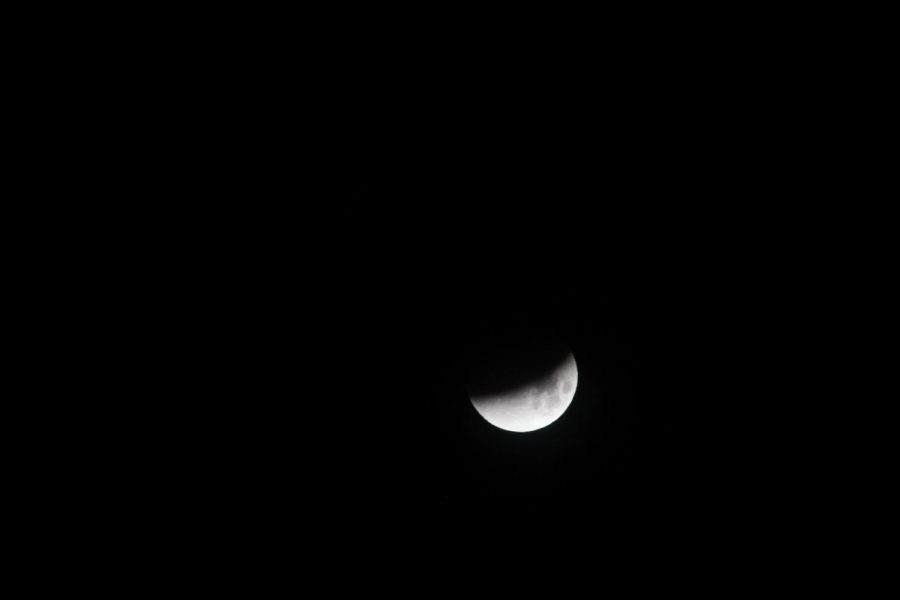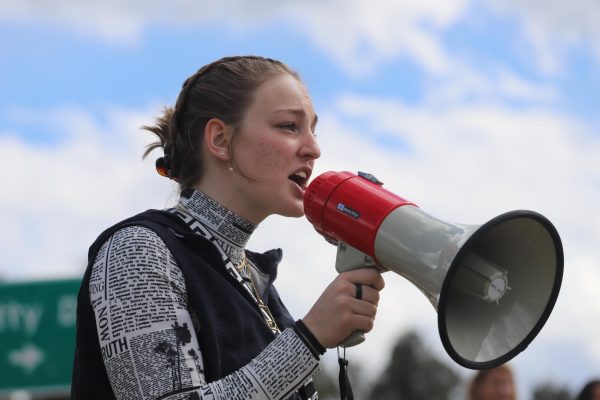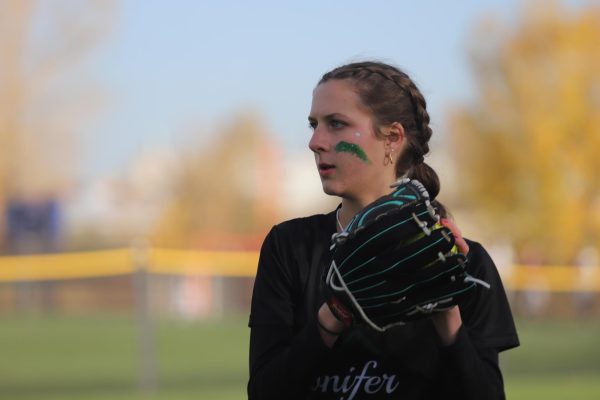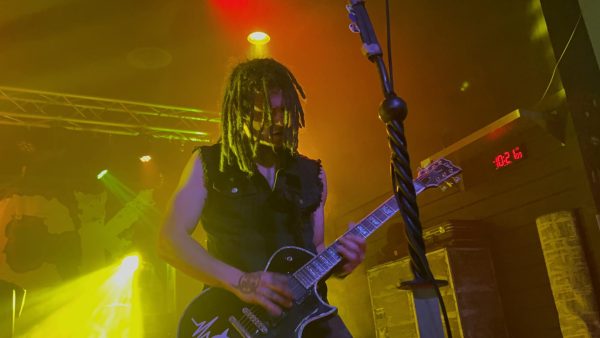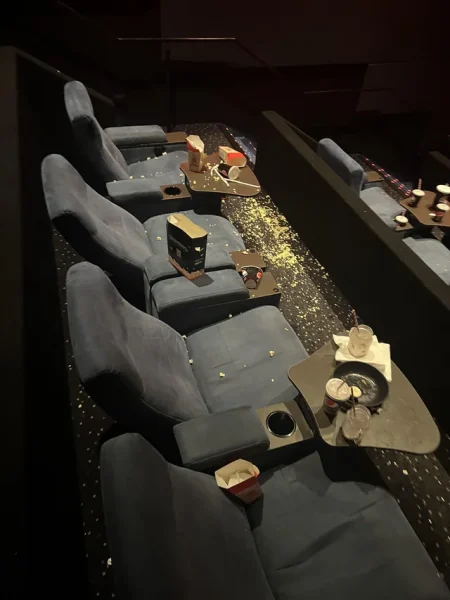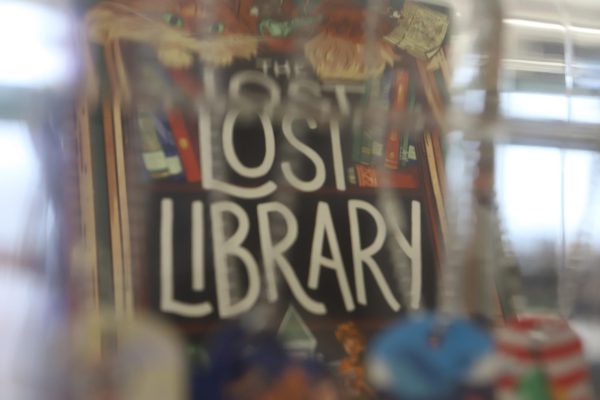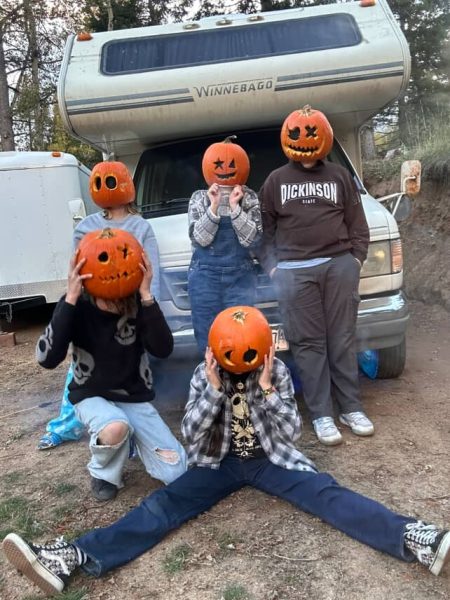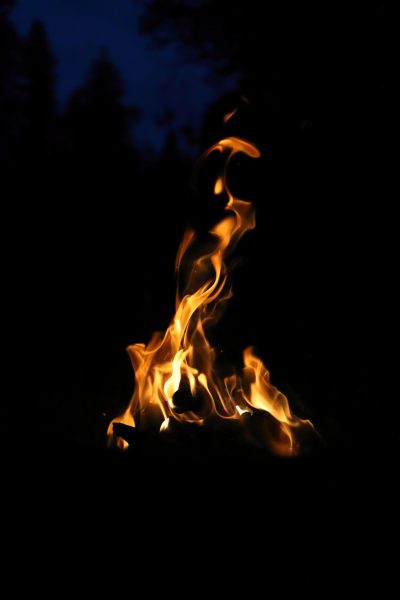Look at the Moon
What Moon?
The moon was still visible with dark edges at the start. First signs appeared by 4:40 AM mountain time and the eclipse continued until around 6:00 AM.
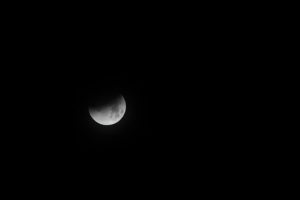
The sun covered half the moon increasing the details on the moon’s surface.
The moon disappeared on the morning of January 31st. This was the the first occurrence of a total lunar eclipse and simultaneous blue blood moon in over 30 years. Lunar eclipses are not all that uncommon nor are blood moons, but the U.S has not seen a total lunar eclipse since 1986. The fact
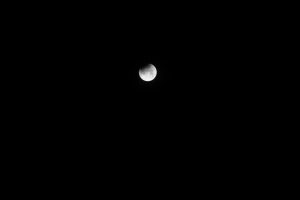
The moon neared a crescent at 5:30AM, around the same time that some of those watching saw a shooting star to the west.It was like watching a full month of the moon cycle in two hours.
that they were on the same day is extremely rare. The eclipse lasted from around 4:40 to 6:00 AM, and the moon was extremely bright until around 5:00. Just before the moon became fully shrouded from view, the red color was the most vibrant. By 6:05, the moon was nearly impossible to see and slowly came back into view for a short time before the sun rose. NASA live streamed the eclipse from several countries.
